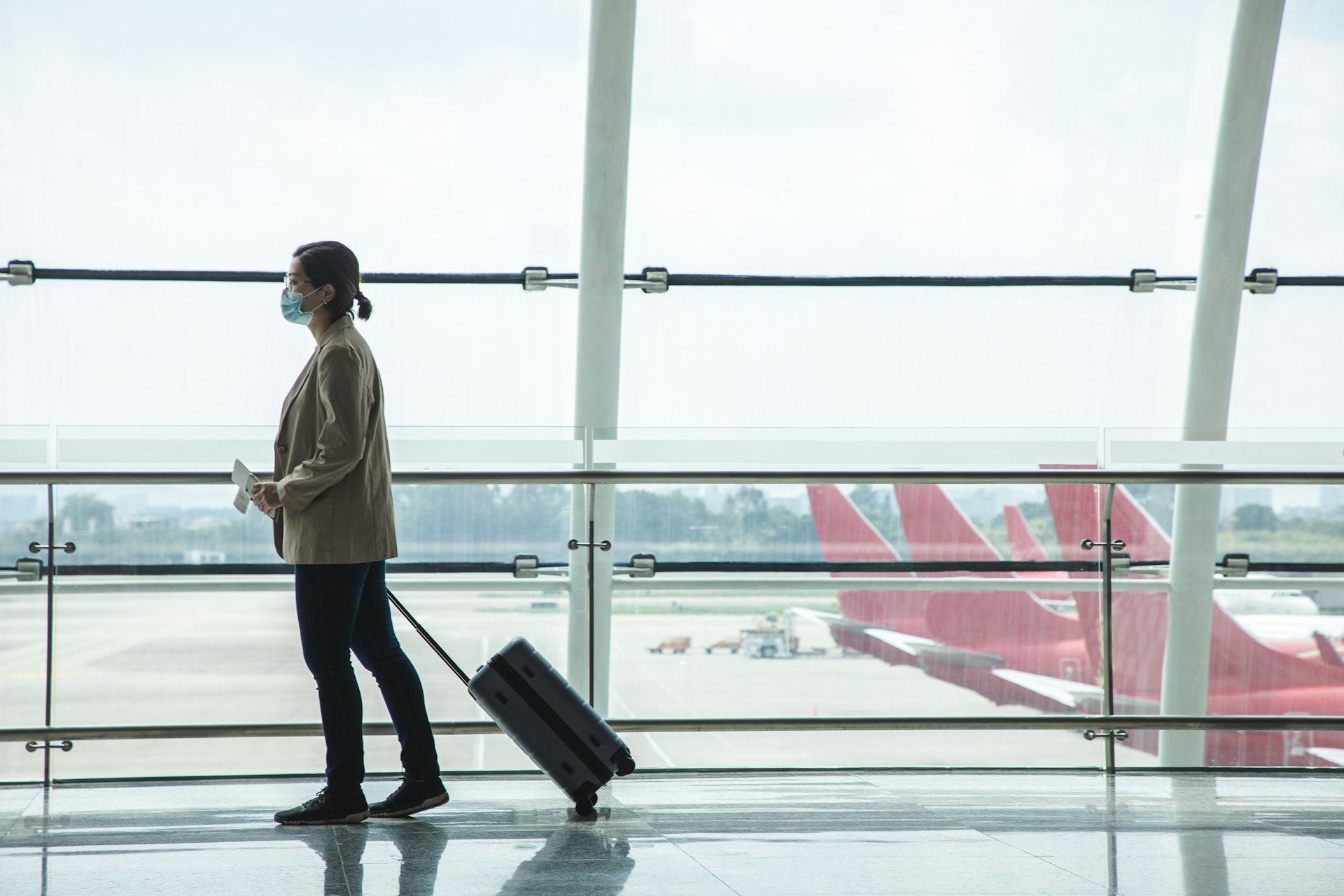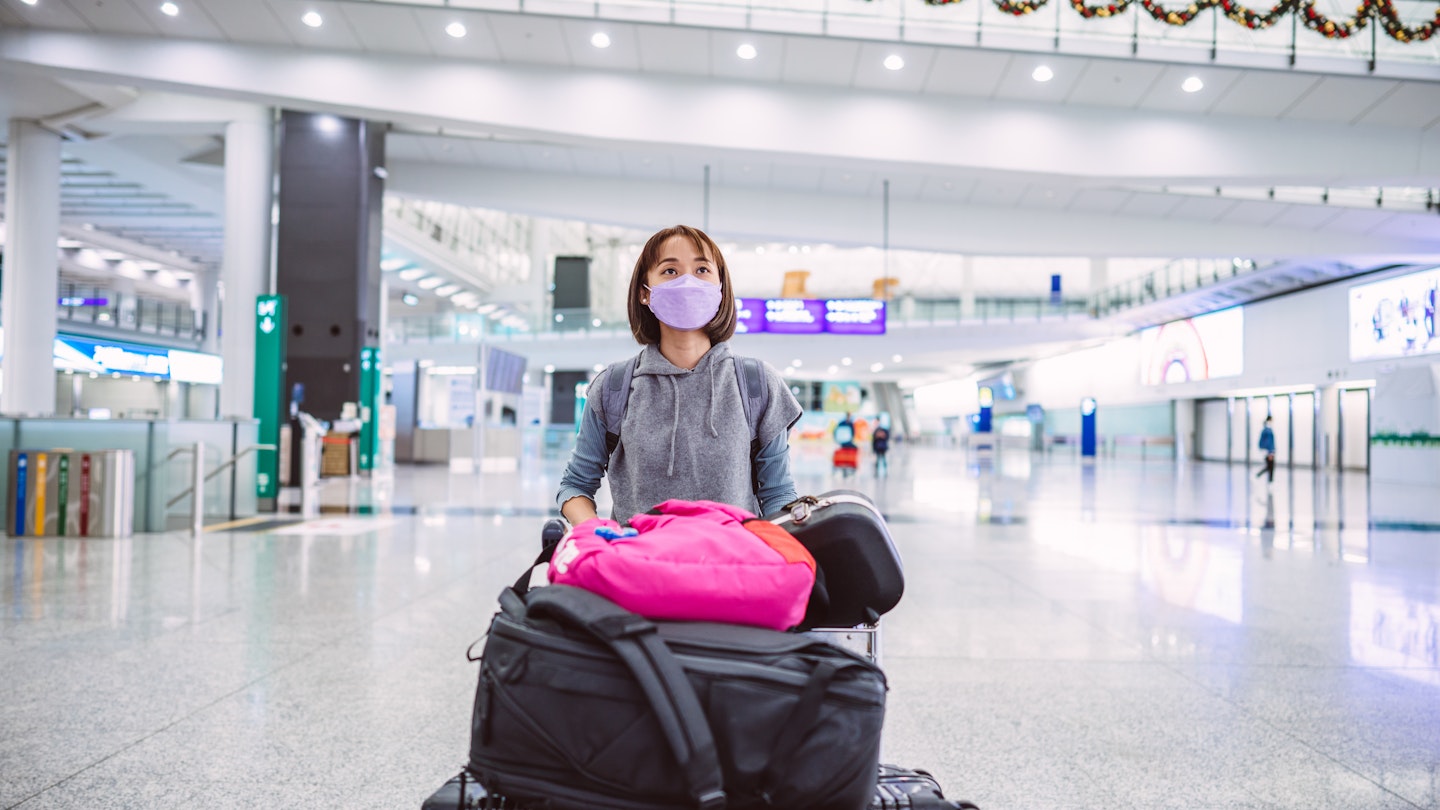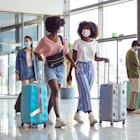With the Omicron variant fueling new COVID-19 cases around the world, the number of countries the Centers for Disease Control and Prevention warns American travelers not to visit rises each week.
On January 10, the CDC added Canada to a list that already contains a lot of popular American vacation destinations like Aruba, Belize, the Cayman Islands, Italy, France, Spain, and the United Kingdom.
But the rate of new cases is also extremely high in the United States. In fact, it’s so high right now the United States fits the CDC’s own definition of a place that Americans should not travel.
So in light of those factors, when the CDC adds a country to the Level-4 list, how should you interpret that warning? Should you cancel your trip?
You’ll have to evaluate your own personal situation to make a decision, but here are a few questions to help guide you in your decision-making process.
What does it mean when a country reaches Level-4 status?
When the CDC issues its advisories, it's evaluating the community spread of the virus in that particular country.
“COVID-19 Travel Health Notices reflect a destination’s risk assessment using the latest data reported by the country to the World Health Organization and other official sources and provide corresponding public health recommendations,” a spokesperson for the CDC said when reached by email.
From there, the methodology the CDC uses for making the determination of the levels of transmissions is pretty straightforward. Using data collected from the World Health Organization, the CDC looks at the number of new cases per 100,000 people in the past 28 days.
Then it categorizes them as follows:
- Level-1 Low:: Less than 50 cases per 100,000
- Level-2 Moderate: Between 50 and 99 cases per 100,000
- Level-3 High: Between 100 and 500 cases per 100,000
- Level-4 Very High (Do not travel): More than 500 cases per 100,000.

“We will continue to monitor the COVID-19 situation, and updates will continue to be made to Travel Health Notices based on these same considerations,” the representative for the CDC said.
Dr. Brian Garibaldi, the director of the Johns Hopkins COVID-19 Precision Medicine Center of Excellence, says that Level-4 threshold of 500 cases per 100,000 people where the CDC recommends Americans do not travel represents a very high amount of transmission.
“But, to put that into context right now, the US is about 1600 cases per 100,000. So technically the US itself meets the level for travel advisory,” Garibaldi said.
The CDC's advisory does not take into account other factors like the level of vaccination in that country.
Evaluate your personal health needs and risk
So, with that information about the methodology the CDC uses in mind, how should you interpret that advisory from the CDC when evaluating whether to travel?
Dr. Garibaldi said it really depends largely on your personal health situation. He boiled it down to three areas you should consider before you decide to go.
What is your personal health situation? Are you vaccinated and boosted?
Personal factors like whether you’re at high risk for severe complications from the virus should factor into your decision of whether or not to travel, but Garibaldi said the biggest thing to consider is whether you are vaccinated and if you are, are you boosted?
“I think if you’re looking at traveling somewhere and you’re not vaccinated, I think it’s pretty high risk for you that you’re going to get infected,” Garibaldi said.
Do you have flexibility if you test positive to quarantine in another country?
With the United States requiring a negative COVID-19 test to reenter the country by commercial air, travelers also must consider the possibility they could test positive and need to quarantine in that country.
“Right now, the asymptomatic test positivity rate is pretty high. You could get stuck at your destination and that has financial and logistical implications. Family implications. Implications for your job,” Garibaldi cautioned.
Read more: PCR tests for travel: everything you need to know
What is your access to healthcare in that country?
Garibaldi said there’s also the possibility you could get sick – either with COVID-19 or something else – and need medical care.
“As much as we talk about the US health system being overwhelmed, there are places in the world right now where you might not be able to get care,” Garibaldi said.
In addition to evaluating the access to healthcare in that country, you should also evaluate your comfort level with seeking medical attention in a country and perhaps language that is not your own.
Read more: Will my health insurance cover getting COVID-19 while traveling in the US—or abroad?
Does a Level-4 status cancel my travel insurance?
After evaluating your personal risks, you should also evaluate the financial risk associated with travel to that country. Can you cover the cost if you get delayed or need to quarantine? Even if you have travel insurance, you might find yourself with a false sense of security if you haven’t read your policy.
Jeremy Murchland, president of Seven Corners, says his company has seen an increase in people, especially those under the age of 30, purchasing travel insurance. He urges them to talk to agents and read the policies to make sure those fit their needs.
“Customers need to understand kind of the restrictions, exclusions, what’s covered and what’s not covered,” Murchland said.
At the start of the pandemic, a lot of travelers were caught off-guard to find the travel insurance policies they purchased had exclusions for a pandemic.
In some countries, like Canada, a high-level warning can void your policy if you choose to go to a destination deemed high risk. In the United States, that answer is a bit more complicated. It depends on your policy and you need to read through it to determine if you’re impacted.
“You need to know what’s in your policy because, unfortunately, there are still travel insurance plans out there – providers that have some of those restrictions,” Murchland said.
In addition, you need to find out if your policy covers you if you test positive for COVID-19 and should need to quarantine or seek medical attention. Sometimes, these are covered under trip interruption and trip delay portions of your coverage.
Read more: How do you choose travel insurance that covers COVID-19?
What are the restrictions in place at your destination?
If the destination shows up on the CDC’s Level-4 list, that also might indicate there are restrictions within the country. Seeing your destination move to this list is a good reminder to cross check to determine if the country is locking down or implementing curfews that might impact whether you get the opportunity to enjoy your visit.
Murchland said along with “cancel for any reason” provisions, his company has seen a rise in consumers purchasing “interruption for any reason” provisions to add flexibility to multi-leg itineraries in case a destination locks down and the traveler decides to no longer travel there.
Finally, you might also double-check the availability of COVID-19 testing at your destination and whether you need an appointment in advance to ensure you can get a test to return to the United States.
The Well-Traveled Path: Healthline's Jenny Yu shares tips for staying safe while traveling
Staying safe if you decide to travel
If you decide to travel, Dr. Garibaldi recommends making sure that you get a well-fitted mask and that you don’t take it off in situations where you might be at risk of contracting the virus.
In addition, after international travel, the CDC recommends that you get tested with a COVID-19 viral test 3–5 days after travel. Monitor yourself for COVID-19 symptoms and if you become symptomatic, isolate and get tested.
The CDC has a list of COVID-19 testing locations on its website. In addition, the CDC is passing out home antigen tests at some airports and the Biden administration is expected to make home tests available to be ordered and sent to your home on January 19 at COVIDtests.gov.
For more information on COVID-19 and travel, check out Lonely Planet's Health Hub.
You might also like:
Explained: What do France's new health pass rules mean for tourists?
Broadway is back with expanded entry rules for theatergoers
Japan extends travel ban through February — but when can international tourists visit?












